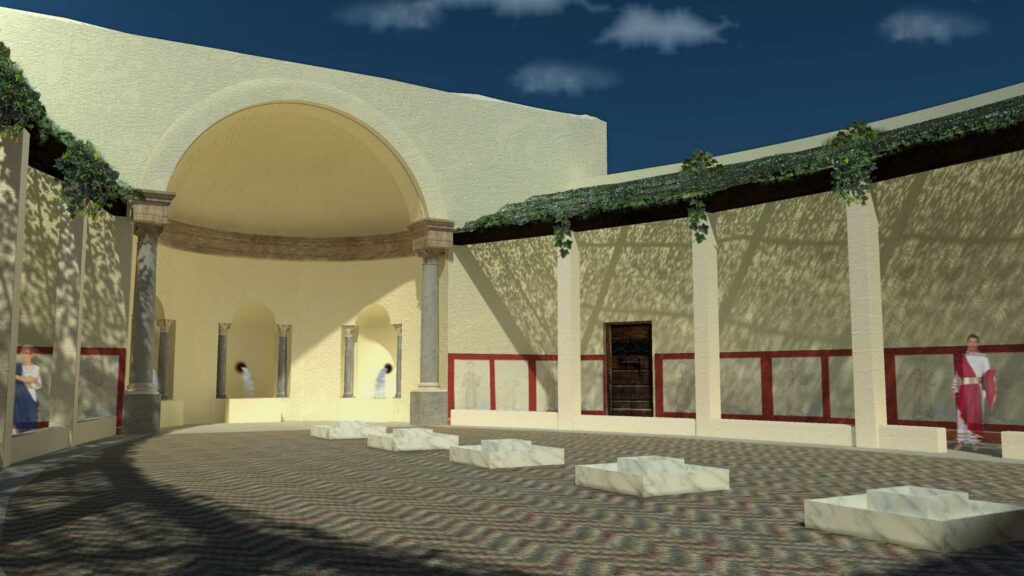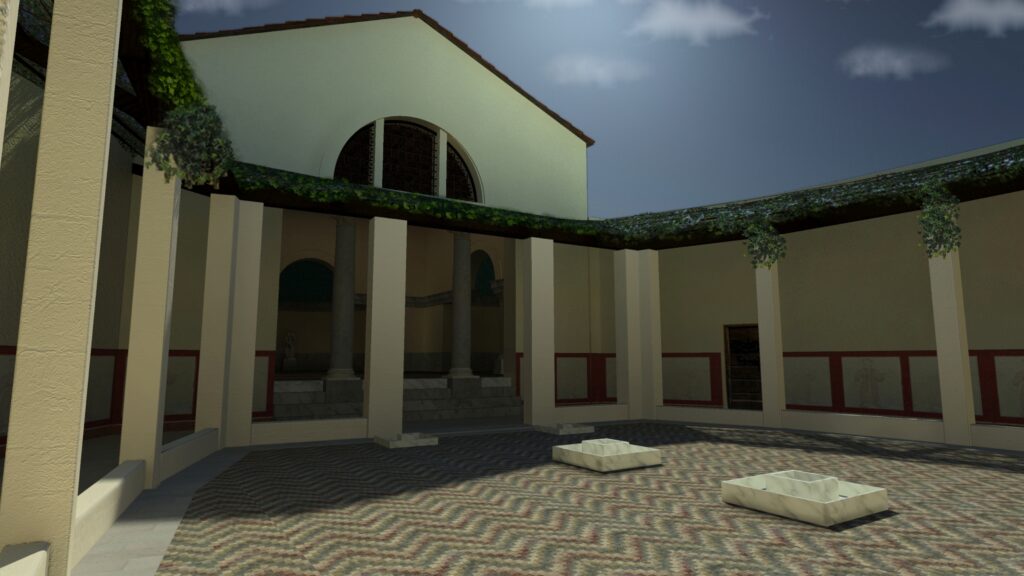 The term xystus comes from the Greek, meaning a covered passage, used in Roman times to indicate a path covered by a pergola, or tree branches, to form a shaded gallery.
The term xystus comes from the Greek, meaning a covered passage, used in Roman times to indicate a path covered by a pergola, or tree branches, to form a shaded gallery.
The most common model is found in the Roman garden, usually located in the peristyle, around it or even to form internal avenues, the viali ambulationes, where you could take a peaceful walk.
In the xystus of the Villa there are remains of the stone pillars, which would have supported wooden beams, probably with a pergola of vines, due to the depictions of the mosaics found in the floors of the nearby rooms.